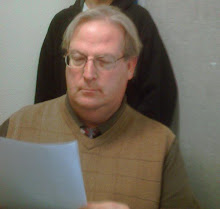Physics Lab 5 Tuesday, August 10, 2010 Name __________________
I Title: Acceleration of Gravity
II Purpose: To determine the acceleration of gravity using simple equipment.
III Equipment
1. String, yarn, or cord ≥ 1.0 meter long (or as close as possible)
2. Weight - to make a plumb bob pendulum (washers?)
3. Stop Watch, face watch, digital watch, clock, or other chronometer
4. Meter stick or metric ruler
5. Weighted Ring Stand Optional
IV Procedure
1. Obtain, or make, a length of string or cord that is very close to 1.00 meter long. Slightly longer is better than slightly shorter.
2. Attach a weight to one end of the string to create a plumb bob, that we will call Bob.
3. Have that same person, or another, attach the other end of the string to some stationary object (door hinge, ceiling, weighted ring stand, etc.). Do NOT use a primate because it is not stable or other mammal to hold Bob because it is not stable.
4. Measure the length of Bob exactly (to the closest millimeter) after you have set it up. This will be from the point of connection on top to the middle of the weight. Record this length (we will call the length “y”) as accurately as possible.
5. Use the Data Table below; one column is for the number of the trials; the other for the time (in seconds) for each cycle.
6. Have one of the lab partners pull the pendulum back, to about an angle of θ = 45° (but no further) as seen in the diagram to the right
6. Simultaneously, release Bob and depress the stop watch button to start the time “running.” It is best to have the same homosapien release Bob and operate the stopwatch (the same brain controls both hands).
7. Allow Bob to swing out and come back to where it was released. Stop the watch. That is one cycle. Record the time in the table. Reset the watch and get ready to repeat.
8. Have the same CroMagnon Repeat steps #6 - #8, nine more times, and place your data in the table. You should have a total of ten trials.
9. Find the average period of oscillation of the ten trials. This means, add up all the numbers in the second column, then divide by 10. Record.
10. Use the data to find the acceleration of Earth’s gravity, g, by re-writing Galileo’s Period-Length equation so that the acceleration, g, is all alone on the left side.
-MORE-
Physics Lab 5 Tuesday, August 1, 2010 page 2 Name _____________
P = 2 p [(y / g)] ½
P is the period in seconds, y is the length in meters, and g is what we want to find. It will be in meters per square second. This equation reads “Period equals two times pi times the square root of (y/g).”
Let’s continue to re-write this relationship, in order for us to get, g all alone:
[P / 2 p ] = [(y / g)] ½
[P / 2 p ]2 = (y / g)
g = y [2 p / P] 2
Remember that “y” is the length of the string (about 1.0 meter, but make sure it’s exactly measured), and “P” is the average period of time that you found by combining the 10 periods above. And, of course, p = 3.14.
V Data & Calculations:
1. Exact length of string, in meters: _______________
Table of Data
Trial # Time (seconds) Trial # Time (seconds)
1 6
2 7
3 8
4 9
5 10
Average Period of Oscillation of these ten trials (seconds)
P = __________________
YOUR acceleration of gravity, in m/s2:
g = y [2 p / P] 2 = ______________________
-MORE-
Physics Lab 5 Tuesday, August 10, 2010 page 3 Name _____________
The true value of acceleration is g0 = - 9.8 m/s2.
VI Results:
The purpose of determining the acceleration of gravity using the equipment and procedures above was or was not achieved due to: (explain in detail)
VII Error Analysis:
A. Qualitative Error:
Personal: (what did you or your partner do to screw up?)
Systematic: (what external factors happened that you could not control, e.g., broken equipment, doing the lab in a hurricane, etc.)
Random: There is always random error, unless one does multiple trials. Since we did 10 trials and took an average, there is NO random error in this lab.
B. Quantitative Error:
Find the quantitative error for this experiment: (% error). Find this by using the error analysis formula:
|[True Answer – Your Answer]| / [True Answer] x 100% = ________%
Remember, the true value of acceleration is g0 = - 9.8 m/s2.
VIII Questions
Information: The acceleration of gravity, g, for any planet, is equal to: g = GM / R2 where G is the universal constant of Gravity = 6.67 x 10-11 Nm2/kg2; M is the mass of any planet given, and R is the radius of any planet given. You are dividing GM by the square of R = R2.
1. The mass of Mars is M = 6.4 x 1023 kg; the radius of Mars is R = 3.4 x 106 meters. Find the acceleration of gravity of Mars, g♂.
2. The mass of Jupiter is M = 1.9 x 1027 kg ; the radius of Jupiter is R = 7.13 x 107 m . Find the acceleration of gravity of Jupiter, g♃.
END
Tuesday, August 10, 2010
Subscribe to:
Post Comments (Atom)

No comments:
Post a Comment